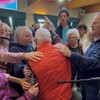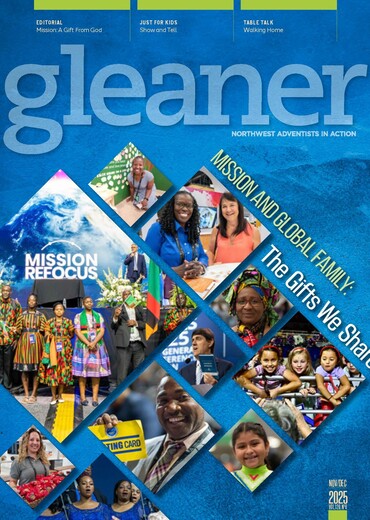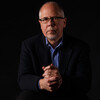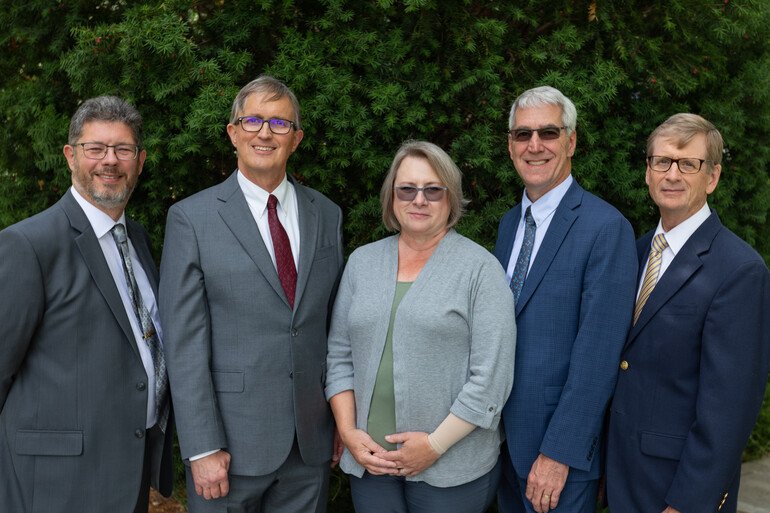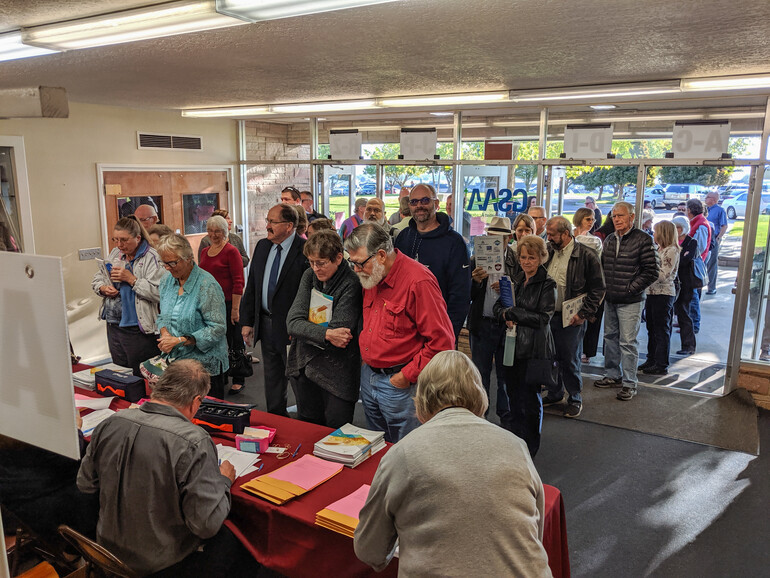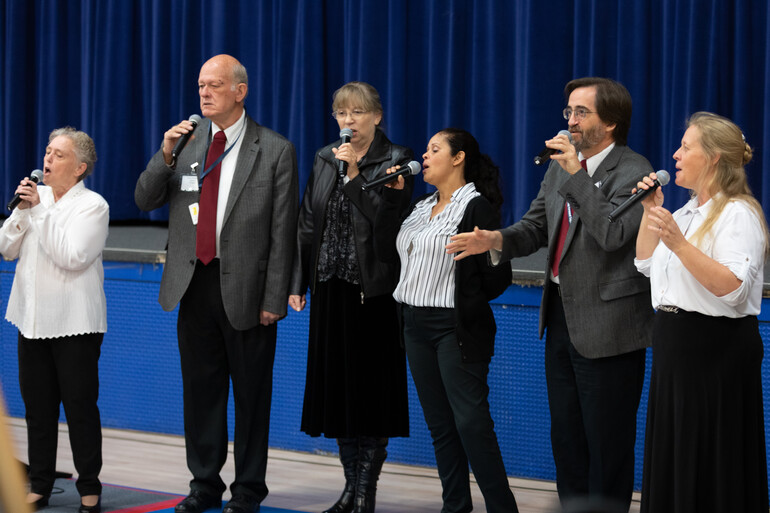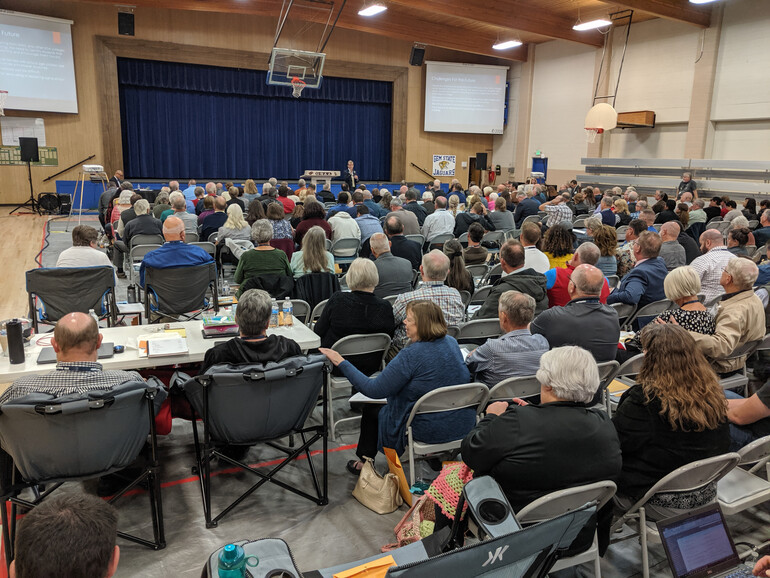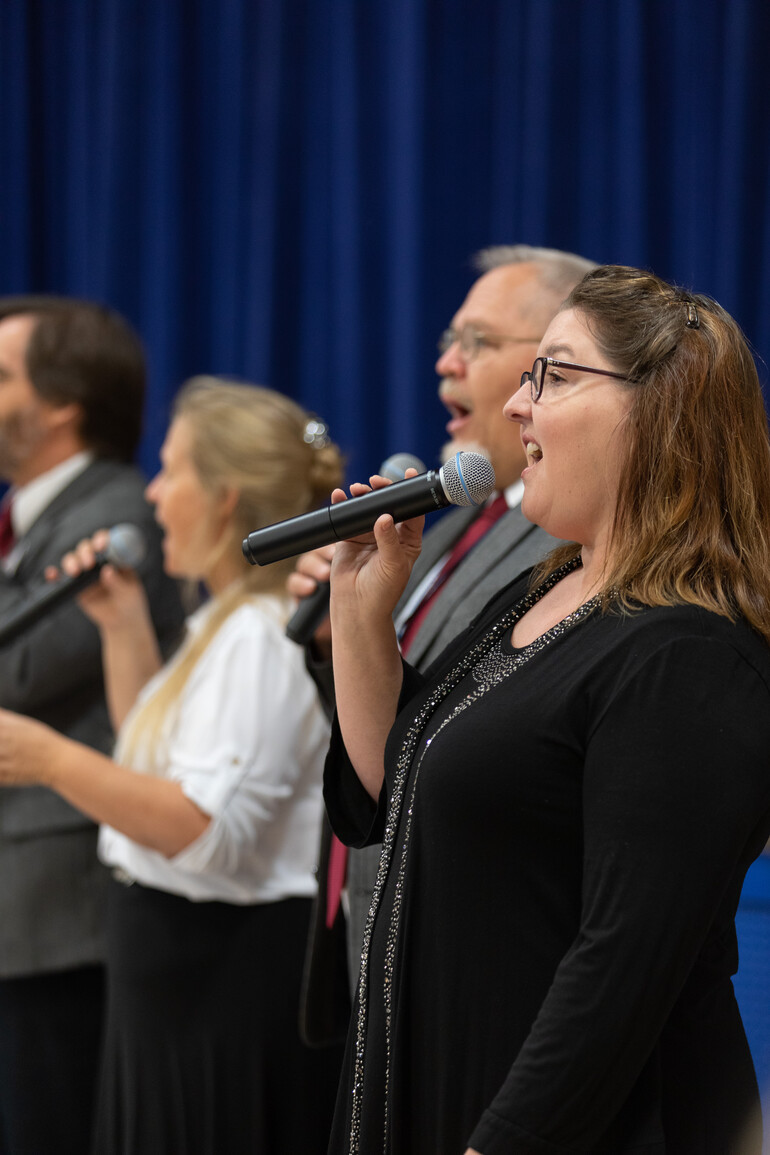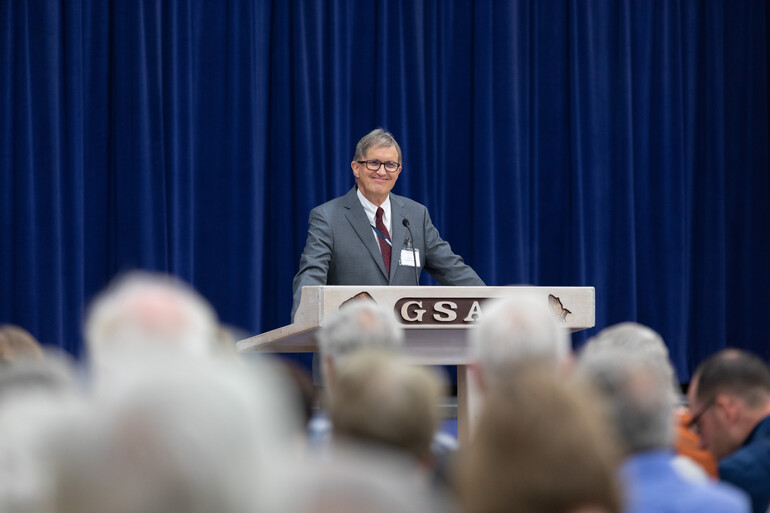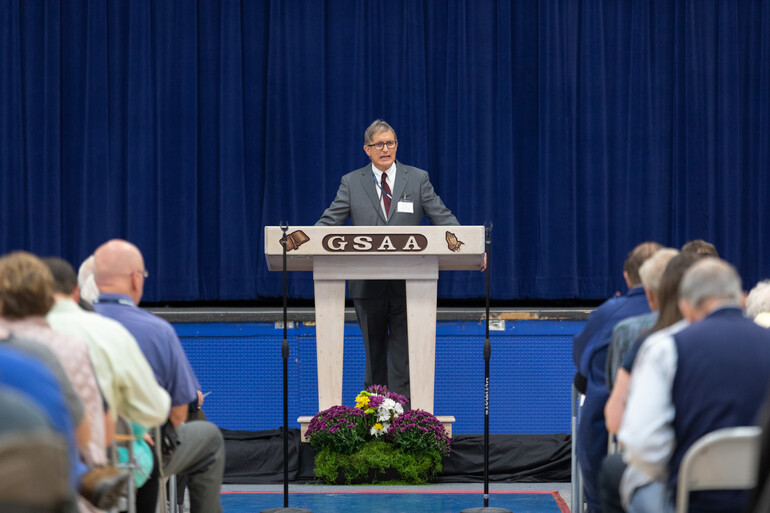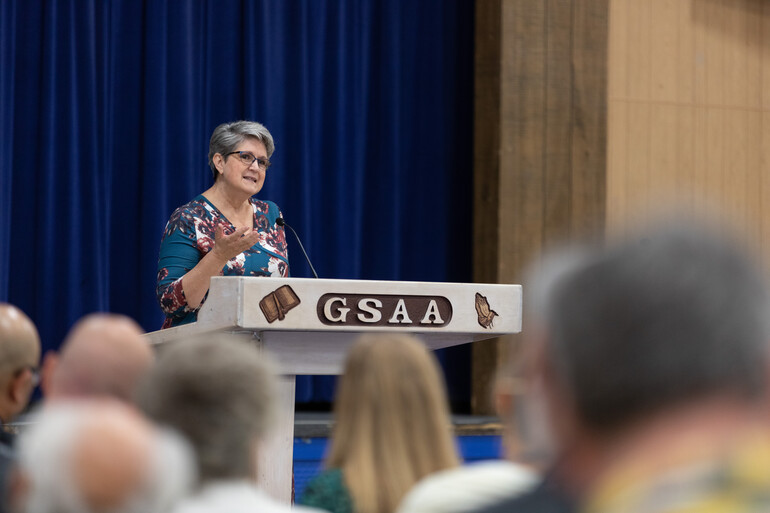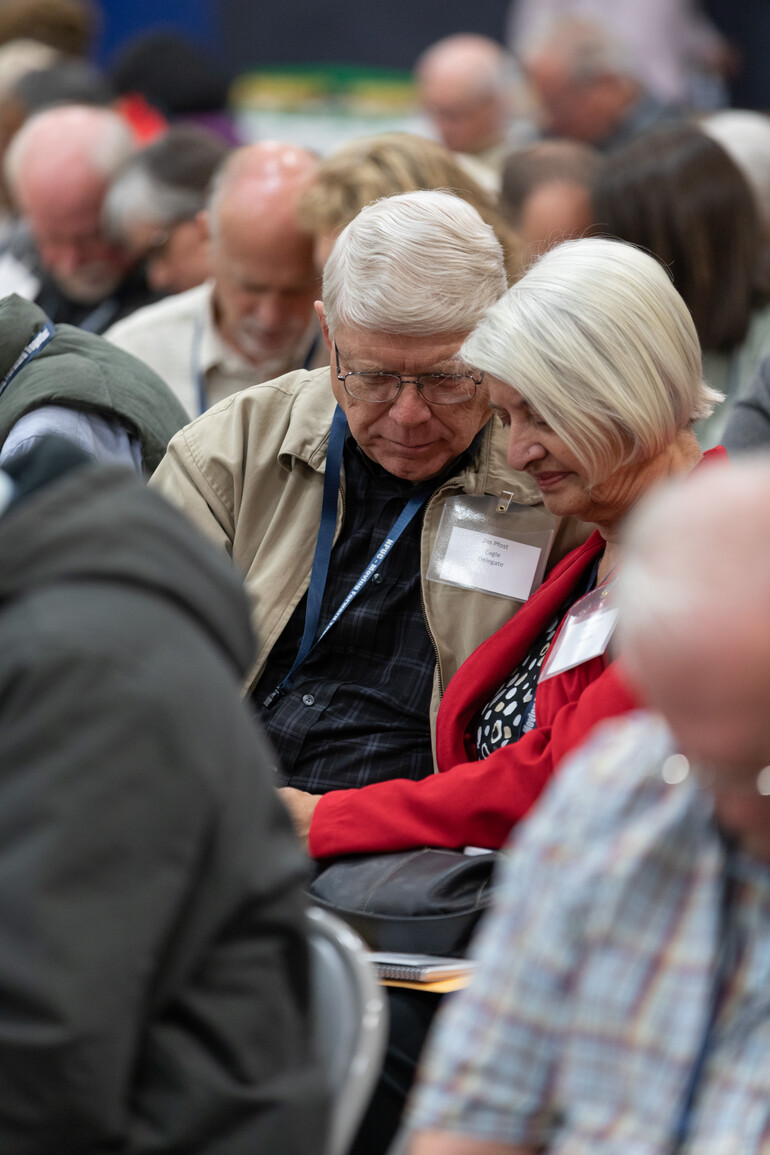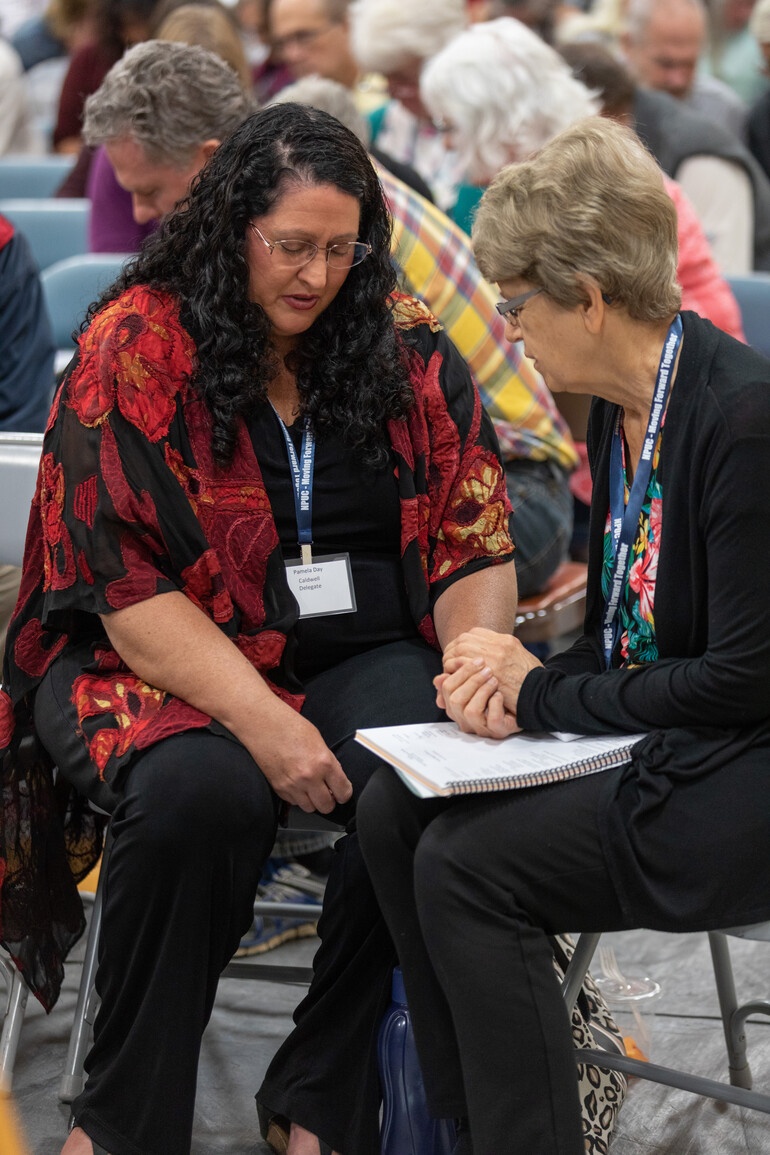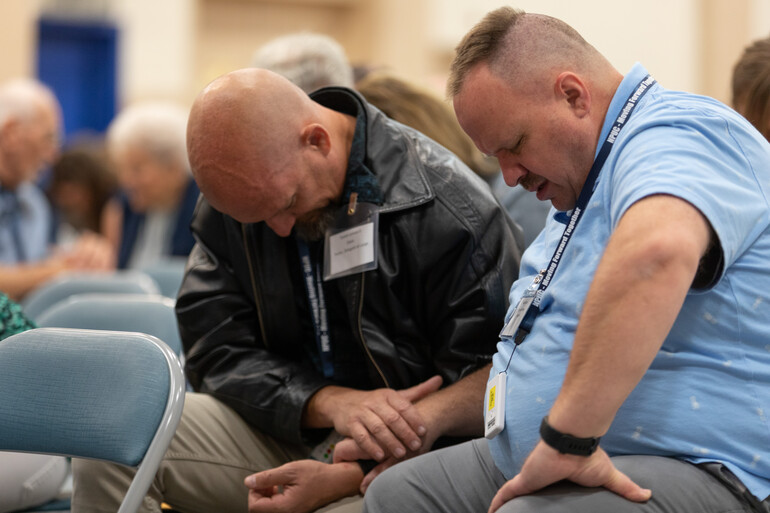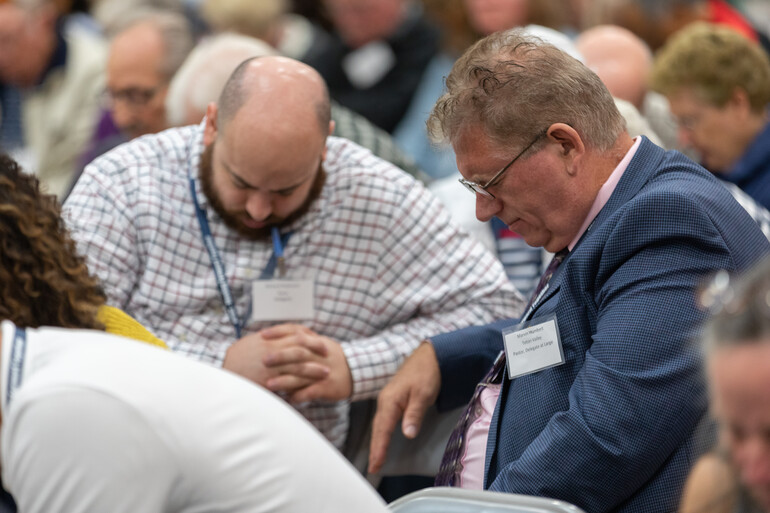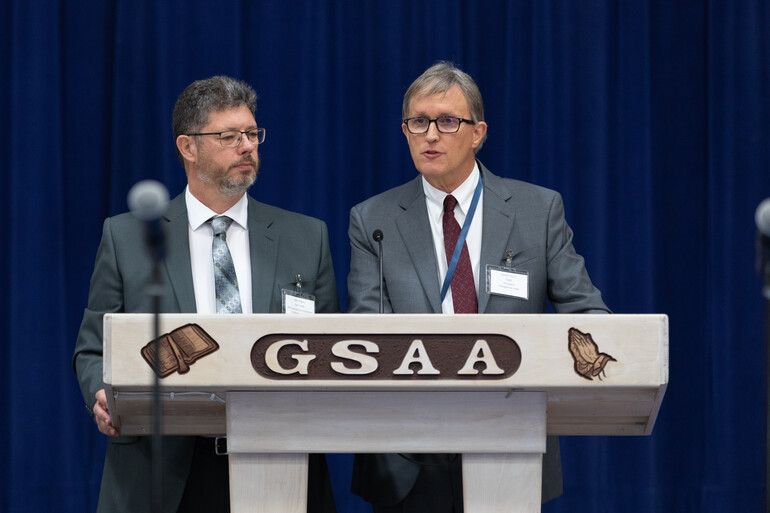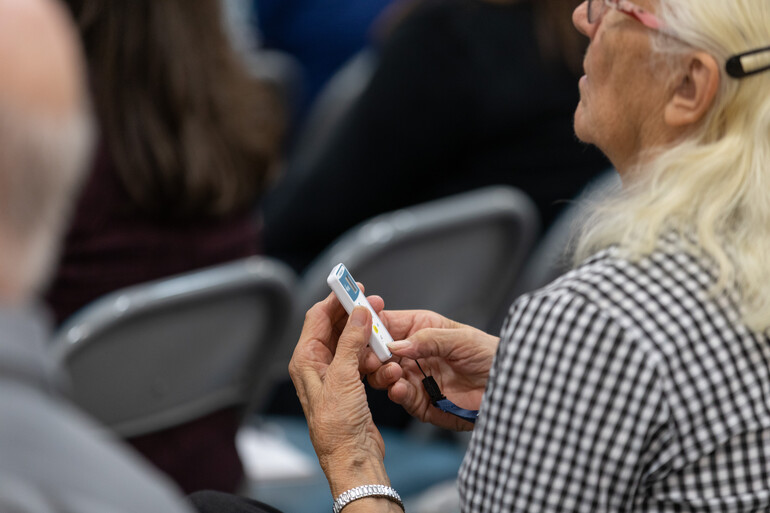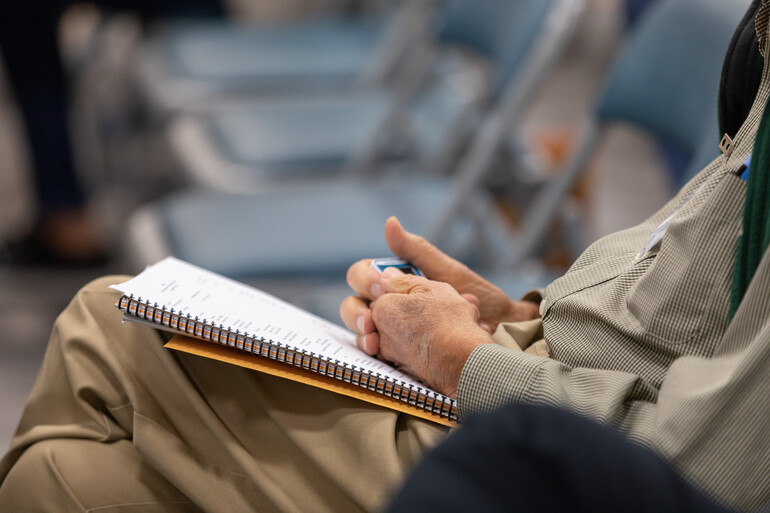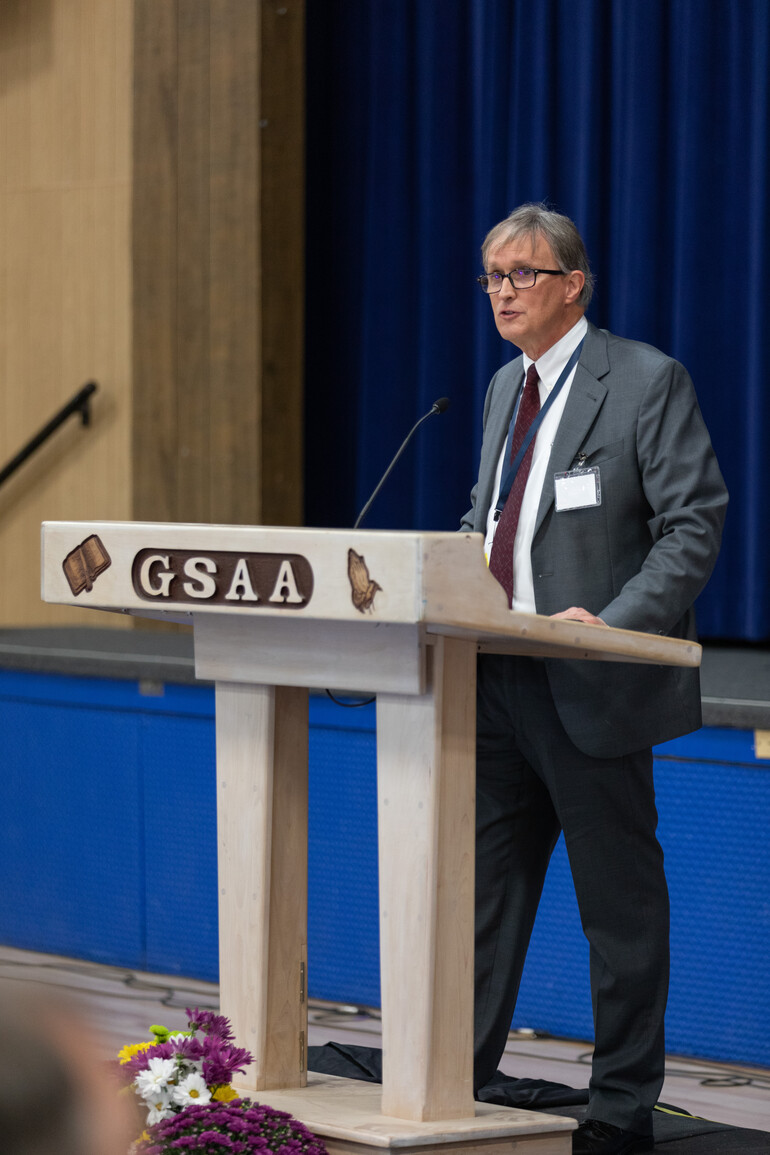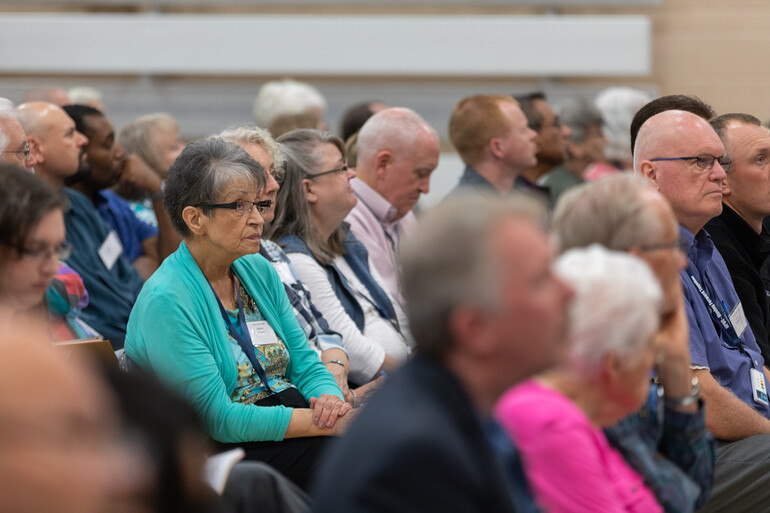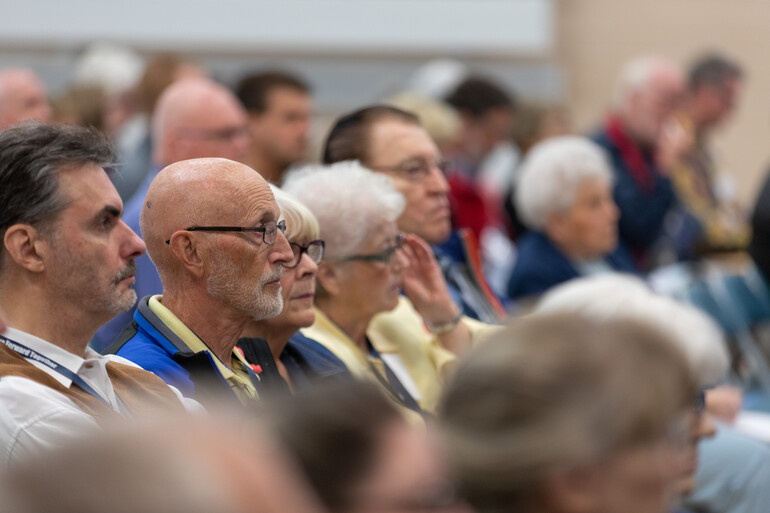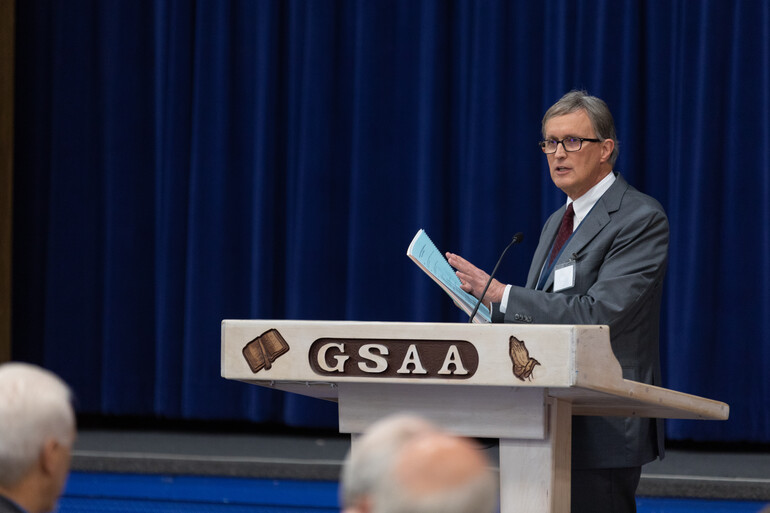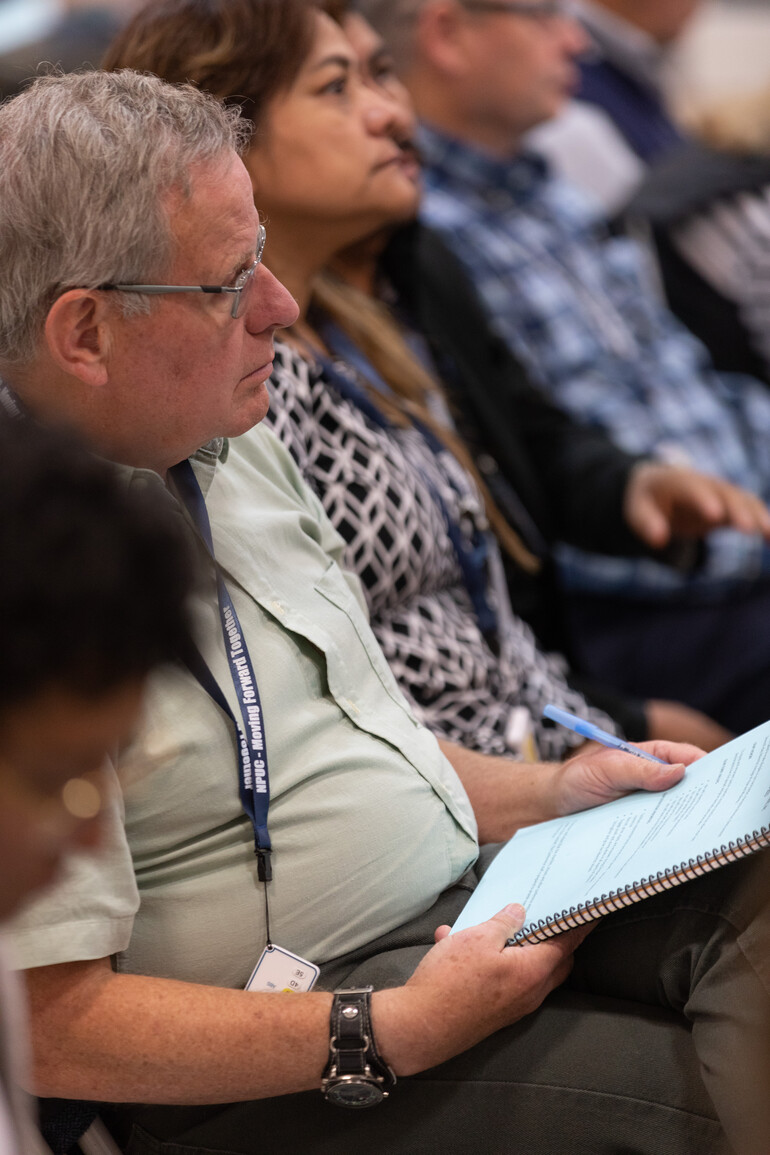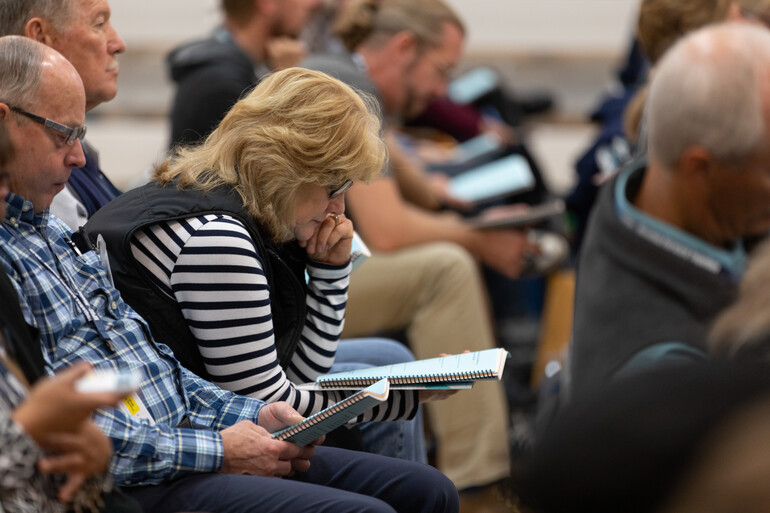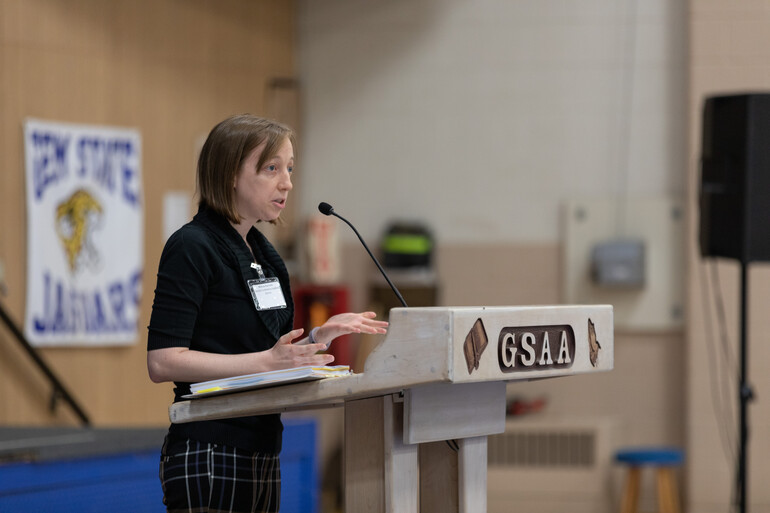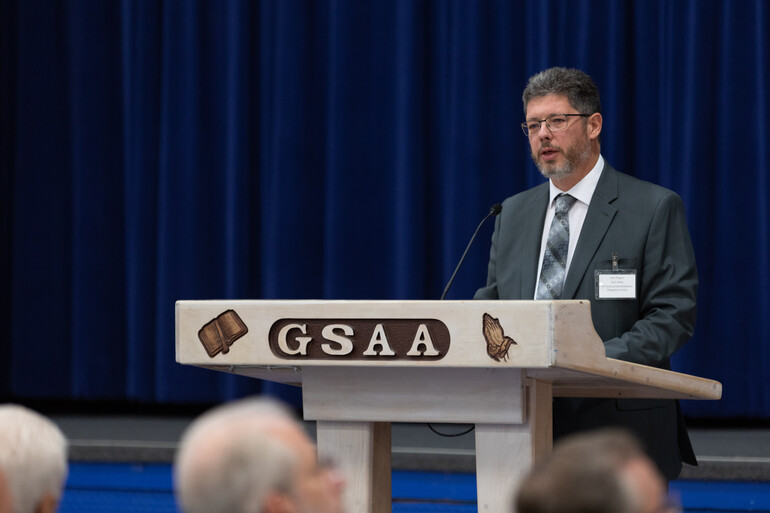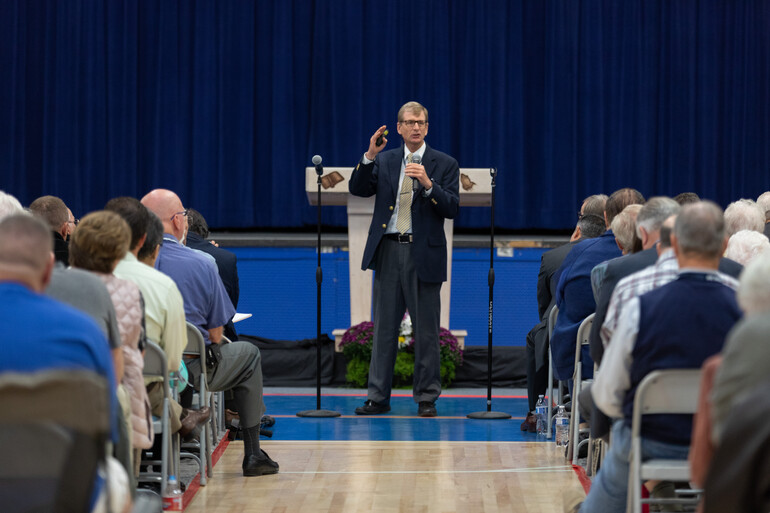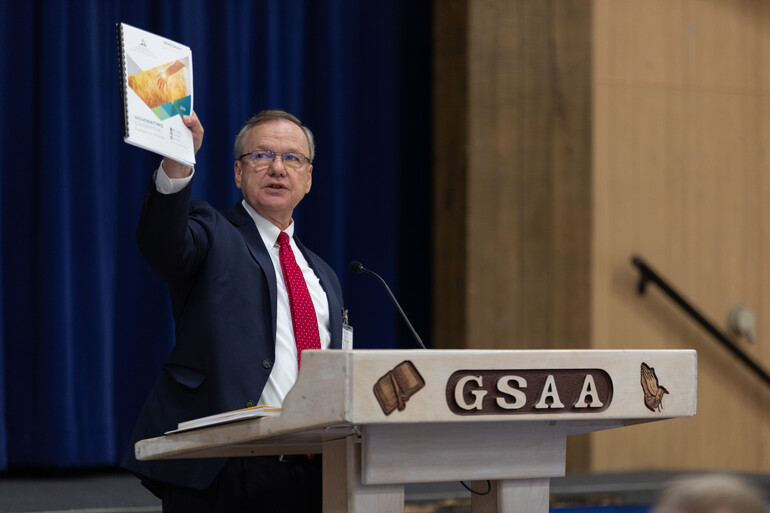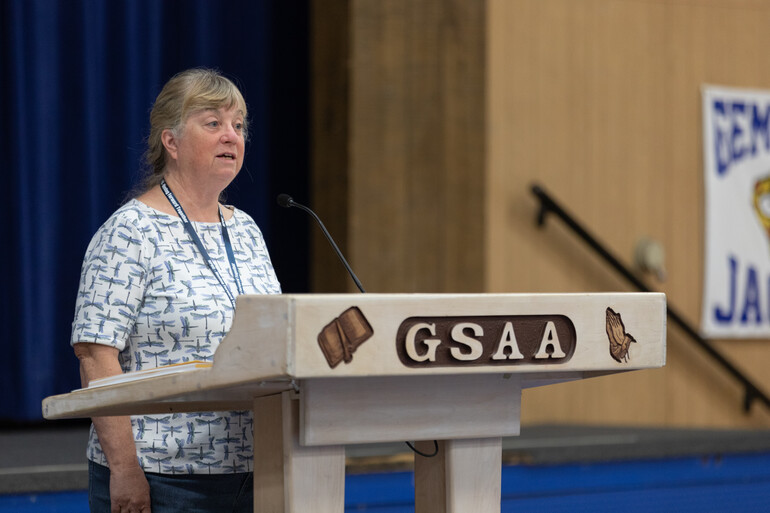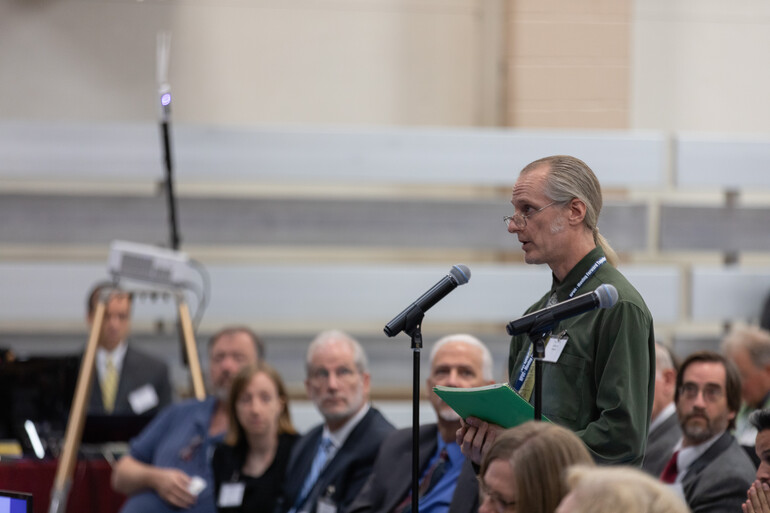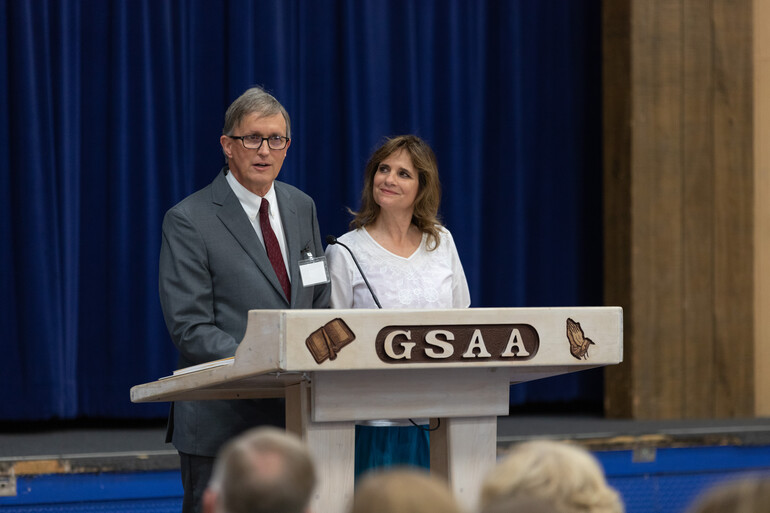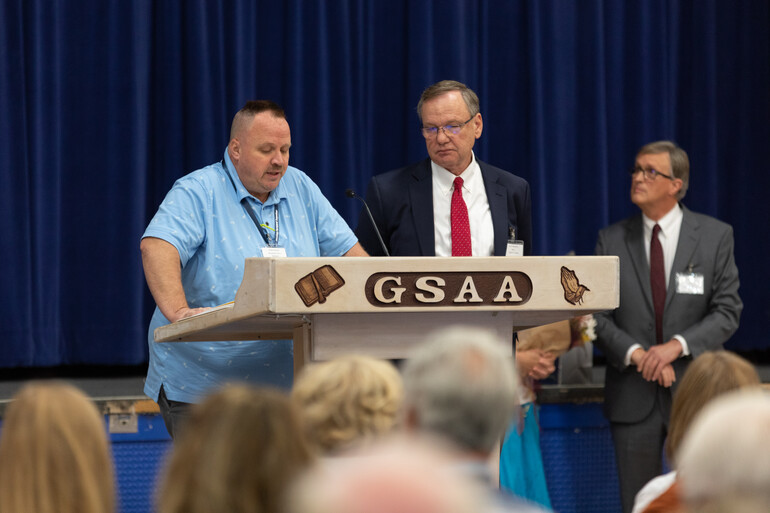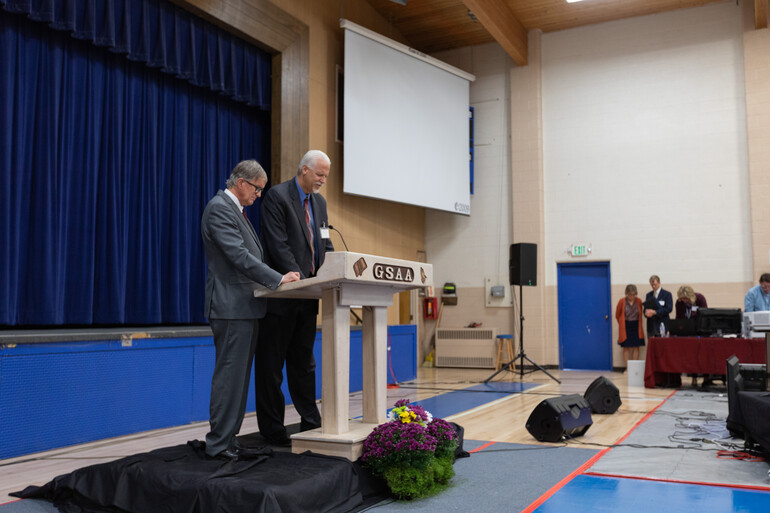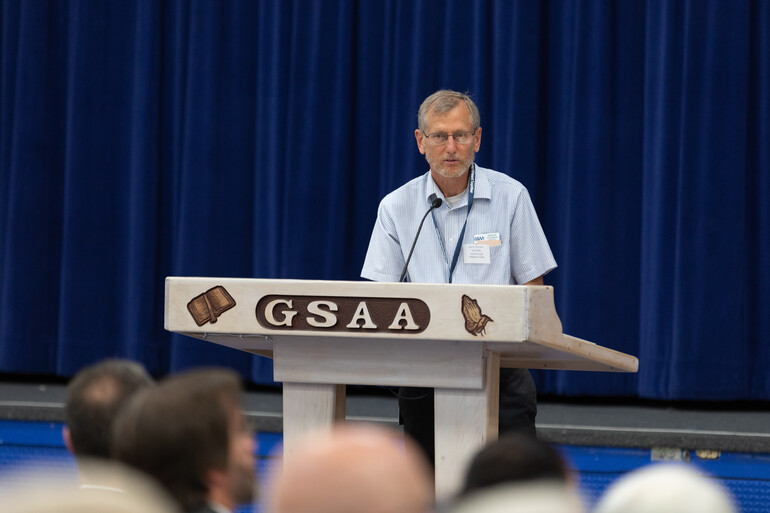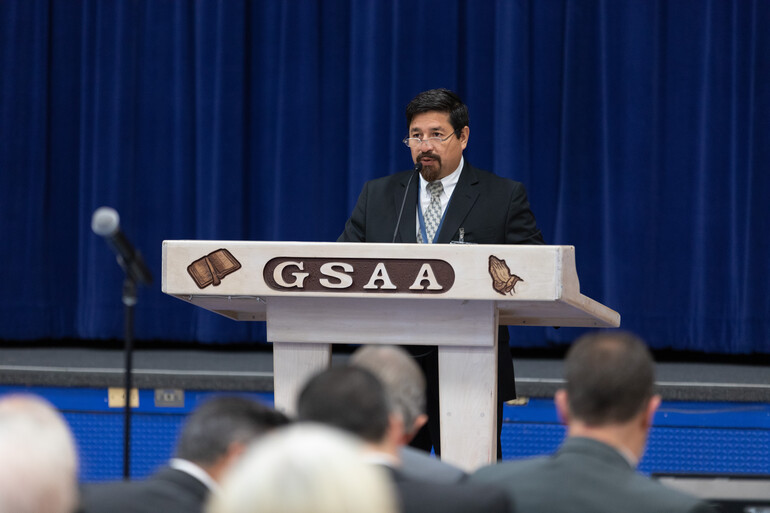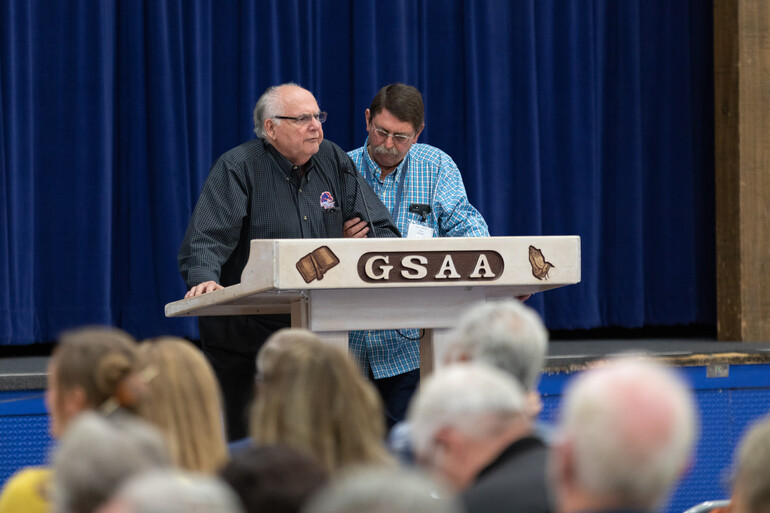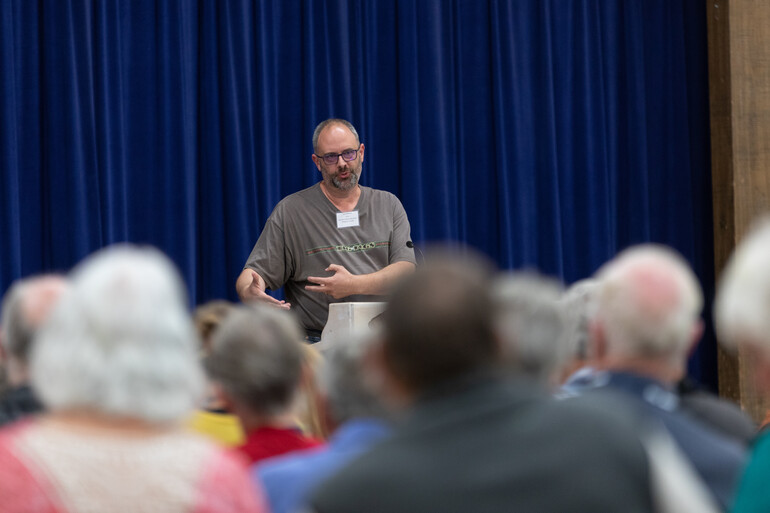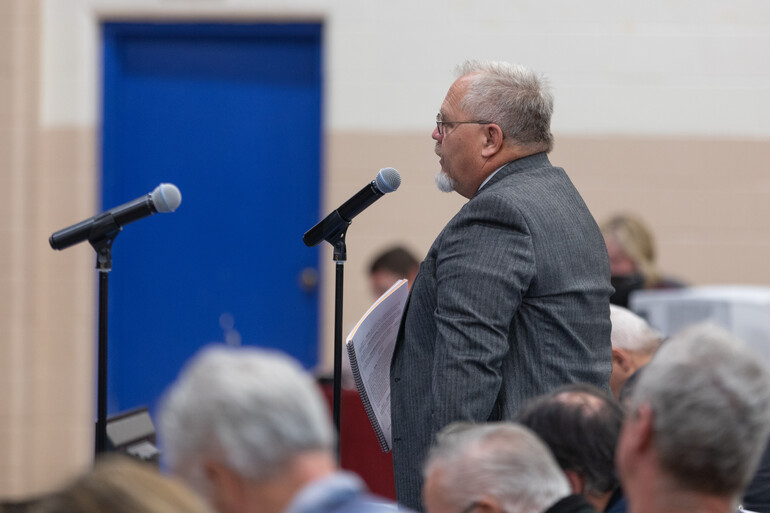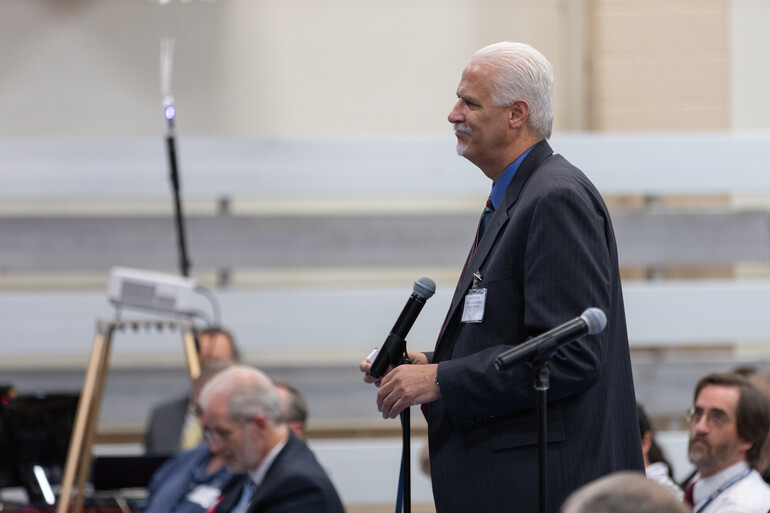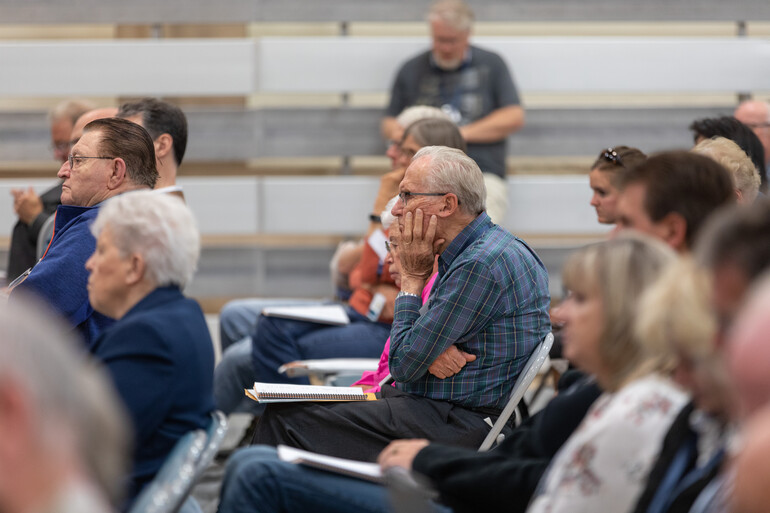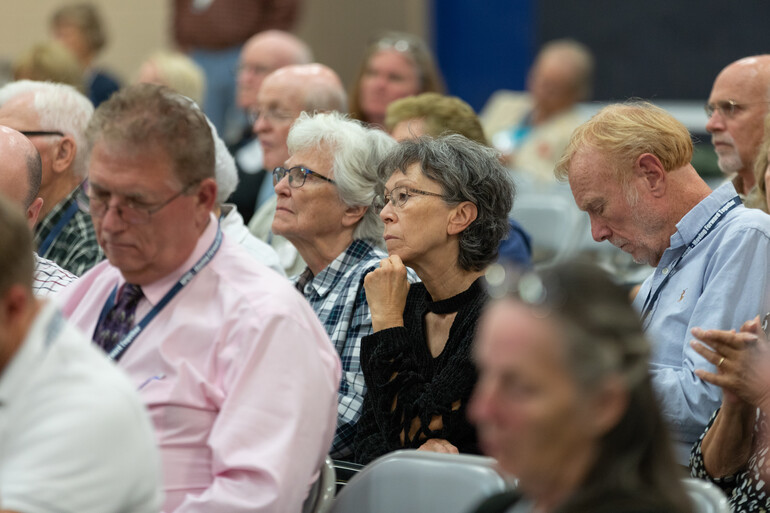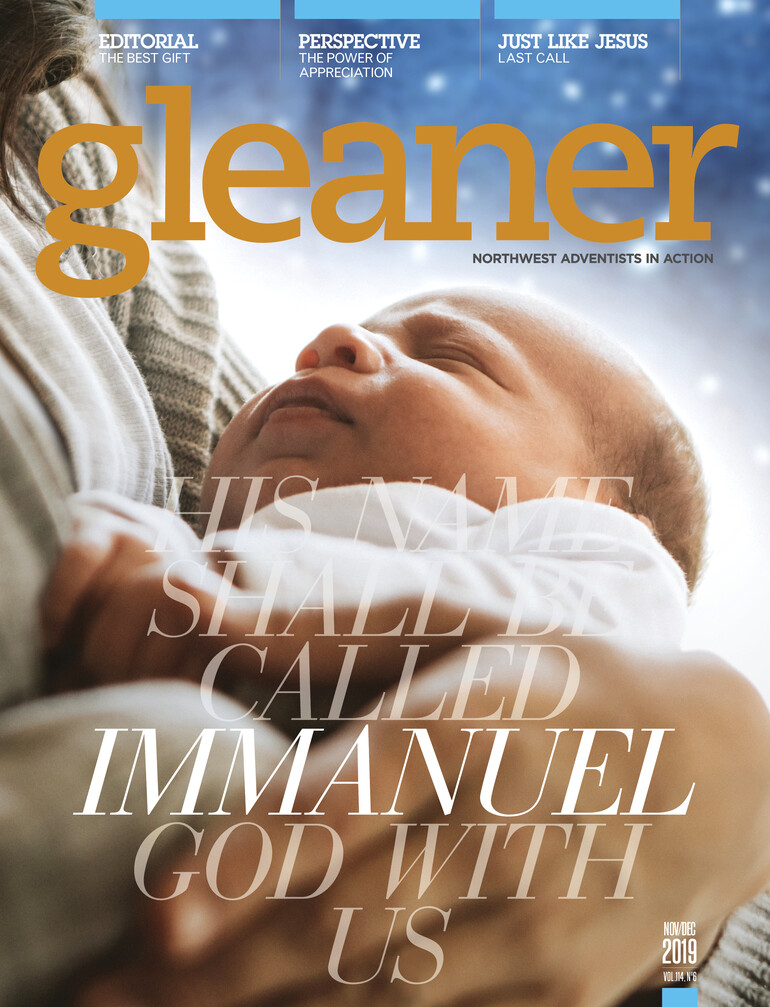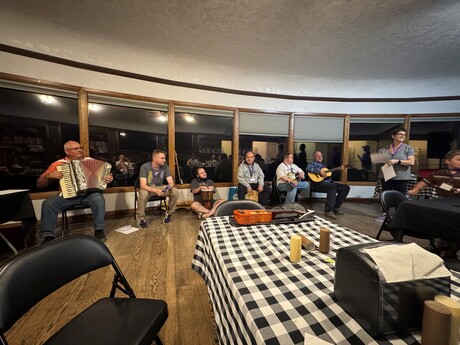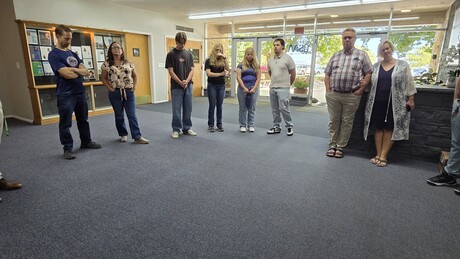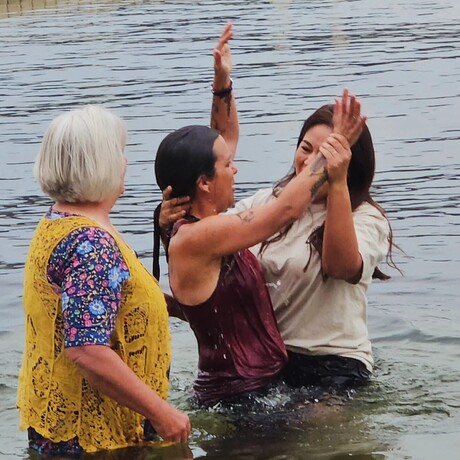Idaho Conference delegates reelected their officers and departmental directors during the 54th regular quadrennial constituency session held Sept. 22, 2019, in Caldwell, Idaho.
From a possible 428 delegates selected as representatives for the session, 318 chose to carve time out of their Sunday to be present and accounted for in the Gem State Adventist Academy (GSAA) gymnasium. They voted to reelect officers David Prest Jr., president, and John Rogers, vice president for administration and finance. They also reelected Patrick Frey as education superintendent and director of senior youth; Eve Rusk as communication, planned giving and trust director; and Jim Bollin as ministerial director. Bollin adds this responsibility on top of his full-time calling as the Kuna Church pastor. Both officers also direct additional services for the conference: Prest also oversees ASI, church ministries, personal ministries and Sabbath School services, while Rogers adds stewardship to his list of duties.
Delegates appreciated their first opportunity to use electronic voting devices provided by the North Pacific Union Conference. While each person was assigned a device, the NPUC process did not have access to delegate names, nor were the tallied vote records provided back to the conference. Hence the process not only kept each vote anonymous, but enabled a more accurate and efficient way to count ballots in comparison with the traditional raising of hands.
Devotional Theme
The overarching theme of the day, "Partners for Heaven," was echoed unmistakably in John Freedman’s devotional message to kick off the proceedings. Freedman, North Pacific Union Conference (NPUC) president, asked the delegates, “Do you love Jesus?” Following their resounding “amen,” Freedman responded, “Good, I’m in the right place!” He reminded delegates “this is God’s time, this is God’s place, this is holy ground — we are here to worship.” That important thought helped to maintain a sense of mission throughout the day. It wasn't “just church business.” This was time that allowed delegates to respond and support God’s mission in and throughout the conference.
President's Report
In his president’s report, Prest shared that the vision ahead for the conference was dependent upon the Word of God to Zerubbabel in Zech. 4:6. Prest reminded those present the conference mission would never be accomplished by human plans, wisdom or strength. “It’s not by might, or power, but by His Spirit that we will be in step with His plans,” he exclaimed.
Prest outlined several areas in which the conference is moving ahead with that purpose. Members have increasingly embraced the priority of evangelism and church growth. Two programs helping with this are the Partners for Growth and Vision 2020 initiatives throughout the NPUC. During the past quadrennium, the conference has provided assistance for 101 soul-winning events, leading to 466 baptisms, 126 professions of faith and 37 rebaptisms.
The net annual membership growth during that period averaged 1.5%. Prest’s vision moving into the future is to increase growth each year to 3%. Michael Gee, conference Bible worker trainer, has personally worked with eight churches and trained 235 lay people.
Conference Finances
While conference finances have struggled in recent years, Rogers brought upbeat news in his financial report. After miniscule tithe increases in the former quadrennium, reports from 2015–2018 show 6.4% growth — a good trend. Tithe from Hispanic churches, now accounting for nearly 10% of conference membership, is up almost 30% in each of the past two years. It has grown from $140,000 in 2014 to more than $280,000 in 2018.
Available cash versus receivables for conference operations has gone from practically zero in 2012 to $1.5 million at the end of 2018. This cash reserve allows the conference to approach mission a bit more aggressively. Debt by schools to the conference has also been significantly reduced. For example, Gem State Adventist Academy’s debt to has been cut in half, from $600,000 to $300,000.
Adventist Schools
Conference members are indeed invested in their schools, seeing them as evangelistic centers. A survey of all schools, including GSAA, shows the averages between Adventist students and those from other religions or none at all, is roughly 50-50. While GSAA shows 90% of students are Adventist, several of the elementary schools show non-Adventist students make up from 60 to 100% of the enrollment.
Overall enrollment in elementary schools climbed from 243 at the beginning of the quadrennium to 275 for the 2018–19 year. Enrollment at GSAA is still a bit tenuous, dropping from a recent high of 75 students in 2015–16 to 62 students for the 2019–20 year. Those challenges are being met by Marvin Thorman, principal, and vigorous donor development efforts, which are showing a healthy upward trend.
Frey, Idaho Conference superintendent of schools, listed five important goals for the new quadrennium:
- Claiming kids for Christ;
- Continuing to hire high-quality teachers;
- Improving new-teacher mentoring program;
- Training teachers with the most effective methods in harmony with the vision of Adventist Christian education;
- Encouraging all teachers to become STEM/STEAM certified within the next two years.
Other Actions and Reports
Delegates also approved three committees for the new quadrennium: the conference board of directors, board of education, and articles and bylaws committee — all listed at the end of this report. Of special note is the decision to add two additional slots to the board of directors: a Hispanic pastor and a lay person in order to maintain the lay person to employee ratio at 60:40. They slogged through the fine print of articles and bylaws changes. These consisted almost entirely of wording edits for greater clarity and consistency. They also approved a recommendation from the board of directors to dissolve the GSAA visioning and endowment management committees and make the land use committee a subcommittee of the board of directors.
Great and stirring reports came from Camp Ida-Haven and Barefoot Media Ministries. Camp Ida-Haven reaches many campers each year for Christ — 73% of whom are not from Adventist families. Decades ago, current camp directors Doug and Darla Roe said they’d commit to five years. Now, 27 years later, they’re still at it. Barefoot Media, with radio ministries KTSY-FM The Bridge and Project 88.7, is powerfully connecting with the target communities. KTSY ranks No. 3 of all stations in the greater Boise market overall and No. 1 within its target demographic. Project 88.7, perhaps the only “hip-hop” radio station partnering full time with a local conference on mission, has seen engagement rise by 150% within the past year.
The Vision Ahead
Prest laid out his vision for the conference as it looks ahead at the next four years:
- Facilitate exponential, Christ-centered church growth — spiritual, discipleship and numerical;
- Recruit, grow, equip and empower strong Christian leaders;
- Engage youth and young adults in all aspects of ministry;
- Strengthen and grow our Adventist schools.
At the end of day, as delegates got ready to adjourn, Prest left them with one simple, final thought: “By His Spirit,” he said, “let’s win souls for Jesus.” It thoughtfully and effectively underscored the philosophical essence of the "Partners for Heaven" session.
The conference vision, mission and strategic priorities are listed below, along with the committees approved by the Idaho Conference delegates for the 2019–2023 quadrennium.
Vision
To equip and empower pastor-coached, lay-driven churches that reflect Jesus' love, passionately live the gospel and grow spiritually and numerically.
Mission
We are called to make disciples in our communities, sharing the distinctive, Christ-centered, Seventh-day Adventist message of hope and wholeness.
Strategic Priorities
- Facilitate exponential, Christ-centered church growth (spiritual, discipleship and numberical)
- Recruit, grow, equip and empower strong Christian leaders
- Engage youth and young adults in all aspects of ministry
- Strengthen and grow our Adventist schools
Board of Directors
- David Prest Jr., president, chair; ex officio
- John Rogers, vice president; ex officio
- Patrick Frey, education superintendent; ex officio
- Marvin Thorman, GSAA principal; ex officio
- Verna Reinbold, K–12 teacher
- Mike Armayor, pastor, region 1
- Francisco Altamirano, pastor, region 2
- Marvin Humbert, pastor, region 3
- Narcie Herrera, lay person, region 1
- Janice Bailey, lay person, region 1
- Jim Harris, lay person, region 1
- Bernardo Ceniceros, lay person, region 2
- JT Miller, lay person, region 2
- Maria Echevarria, lay person, region 2
- Ginette Lanto, lay person, region 2
- Hudson Logan, lay person, region 2
- Doug Miller, lay person, region 2
- Dan McKey, lay person, region 2
- Amanda Withers, lay person, region 2
- Rod Pratt, lay person, region 2
- Christina Ionescu, lay person, region 3
- Mireira Munoz, lay person, region 3
Articles and Bylaws Committee
- Vern Pritchard, chair, region 1
- John Rogers, secretary; vice president
- Tomm Lemon, pastor, regions 2 and 3
- Gerald Margil, pastor, region 3
- Monty Berecz, lay person, region 2
- Amanda Withers, lay person, region 2
- David Sherman, lay person, region 2
- John Stone, lay person, region 2
- David Hess, lay person, region 2
Board of Education
- David Prest Jr., president, chair; ex officio
- John Rogers, vice president, non-voting; ex officio
- Patrick Frey, education superintendent; ex officio
- Marvin Thorman, GSAA principal; ex officio
- Dennis Plubell, NPUC vice president
- Stacee Campbell, K–8 teacher, region 2
- Monte Wood, pastor with school, region 1
- Dan McKey, board of directors lay person, region 2
- Melanie Decker, lay person-parent, region 2
- Shawn Sprowl, lay person-parent, region 3
- Robert Congleton, school board chair, region 2
- Dennis Clayville, lay person at large, region 1
- Harold Becker, lay person at large, region 2
- Jon Sowers, lay person at large, region 3
